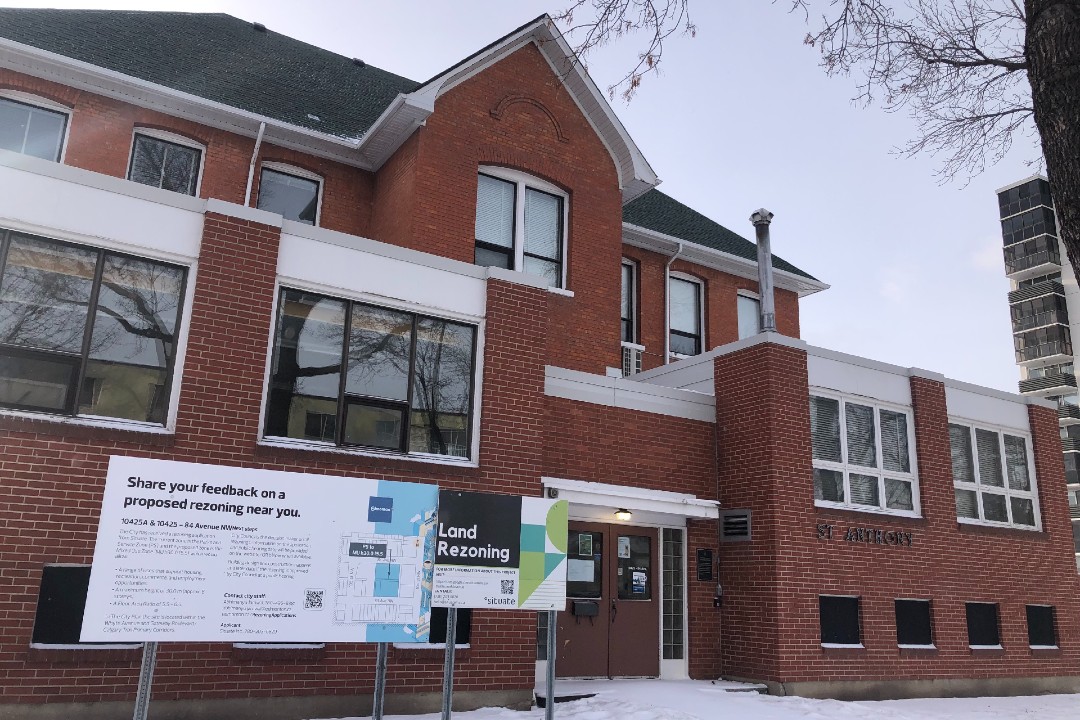January 16, 2025
A busy year for housing development saw a rise of ‘missing middle’ housing like rowhouses, fourplexes and secondary suites, helping the City nearly hit a three-year housing supply target in just one year.
The City’s $175 million Housing Accelerator Fund agreement with the Canada Mortgage and Housing Corporation (CMHC) is contingent on achieving an overall housing supply target by 2026, with subtargets for different types of housing. At the end of 2024, the City is 97 per cent of the way to its ‘missing middle’ multi-unit housing target of 7,741 units - two years ahead of schedule.
“Missing middle housing fills that gap between single family homes and highrise towers, and provides a range of options so Edmontonians can find the housing they need in the neighbourhoods they love,” said Christel Kjenner, Director, Housing Action Team. “Transformative changes like the new Zoning Bylaw are creating housing choice and gentle density everywhere, which in turn helps create vibrant neighbourhoods that meet the needs of our growing city.”
CMHC
defines missing middle housing as multi-unit housing of four storeys or less, and includes secondary suites, backyard housing, duplexes, triplexes, row houses, courtyard housing and low-rise apartments. The City’s
Zoning Bylaw, which came into effect on January 1, 2024, makes it easier to create gentle density by allowing up to eight units on most lots. The majority of ‘missing middle’ building permits approved in Edmonton in 2024 are located in developing neighbourhoods near Anthony Henday Drive.
"The dedication and innovation of homebuilders to supply the market with diverse and affordable housing represents one of Edmonton's main competitive advantages. From developing new neighbourhoods to redeveloping mature ones, middle density housing is no longer "missing" in this community, and that's a huge asset," said Kalen Anderson, CEO of BILD Edmonton Metro.
“IDEA is excited about the progress seen in new missing middle housing starts. In the new year, we hope to see more homes built within Edmonton’s developed area to ensure our mature neighbourhoods remain sustainable, vibrant communities for years to come and continue to make progress toward the City Plan’s goal of 50 per cent of new development being infill,” said Sean Sedgwick, Executive Director, Infill Development in Edmonton Association (IDEA).
CMHC released its year-end housing starts today, confirming 13,484 unit starts in 2024 - a 39 per cent increase over 2023. Starts indicate construction has begun on a new home. The City of Edmonton leads the country when it comes to removing barriers in the housing development process. Actions taken in 2024 under the City’s Housing Accelerator Fund plan include:
- The implementation of the City’s Zoning Bylaw, which enables eight units on most lots - double the federal government’s minimum requirement for a HAF agreement.
- The Zoning Bylaw also allows a range of backyard housing options beyond a garage suite. Builders and homeowners can now add single and semi-detached homes, row housing and even basement suites to their backyards.
- The newly developed $39 million Infill Infrastructure Fund helps cover the cost of shared public infrastructure - like water, storm and sanitary systems, mobility infrastructure and electrical distribution - for new multi-unit housing developments in Edmonton’s redeveloping neighbourhoods.
- Edmonton became the first city in Canada to offer automatic reviews of greenfield development permits for single and semi-detached homes, allowing builders to apply for a development permit and get shovels in the ground on the same day. Since officially launching in September 2024, 794 permits have been processed through automated review.
- 11 City-owned parcels of shovel-ready land - with the potential for up to 1,800 new homes - were made available for affordable housing development.
- The City implemented prioritization of affordable housing development permits, rebated affordable housing development fees for sanitary sewers, created a how-to guide for prospective affordable housing developers.
Key Facts
Housing Starts
Edmonton Metro
- 2024 Total: 13,484
- 2023 Total: 9,665
Edmonton Census Metropolitan Area (CMA)
- 2024 Total: 18,384
- 2023 Total: 13,184
Housing Accelerator Fund Targets
To receive its full funding allocation of $175 million from the federal government, the City of Edmonton must meet building permit targets between November 2023 and November 2026. There is an overall housing supply target, as well as subtargets for different types of housing.
Net New Residential Dwelling Units (By Approved Building Permit) from November 2023 to December 2024:
- Total: 18,172 / 35,433 (51%)
- Transit-oriented development: 4,216 / 6,907 (61%)
- Missing Middle: 7,476 / 7,741 (97%)
- Other mult-unit: 3,334 / 8,520 (39%)
- Of the total dwelling units, 537 are affordable. This represents 28% of the subtarget of 1,940 dwelling units.
The total also includes 3,146 single-detached homes.


edmontonjournal.com



www.timcartmell.ca




